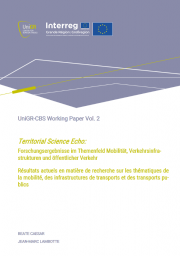Working Paper Vol. 2

The working paper examines the theme of mobility and transport and addresses the challenges of spatial development in the Greater Region. It focuses in particular on the territorial distribution of cross-border worker flows and their dependence on the car within the Greater Region, as well as on the influence of European policy on the challenges of cross-border transport.

